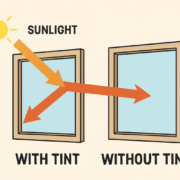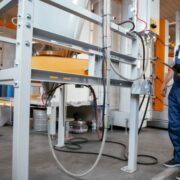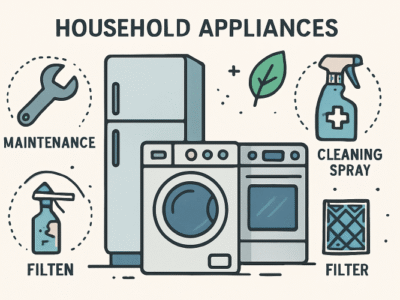How do you provide uninterrupted power in case of grid outages?
Dependable backup power sources enable businesses to continue operating during storms or power outages, thereby preventing costly downtime. Standby diesel generators serve as your backup power strategy to maintain continuity during outages.
Here’s the thing…
Not all generators are created equal. Understanding the key components that power standby diesel generators helps you make educated buying choices while guaranteeing dependable functionality during power disruptions.
What you’ll discover:
- Engine Components
- Alternator Systems
- Cooling Systems
- Fuel Systems
- Control Panel Technology
Engine Components: The Heart of Your Generator
A diesel generator system requires its engine to serve as the critical source of power when operating in standby mode.
Diesel engines are preferred for standby applications due to their extended performance life and reliable functioning. But here’s what most people don’t realize… Quality engine components make sure generators start smoothly and continue working without interruption during extended power outages.
Key engine components include:
- Combustion chambers that efficiently burn diesel fuel to create power
- Cylinders and pistons that turn the burning of fuel into motor energy
- Crankshaft systems that transform linear motion into rotational power
- Fuel injection systems that precisely deliver diesel for optimal combustion
The combustion process in diesel engines follows different operational principles from those in gasoline engines. Diesel engines work better and more consistently than engines with spark plugs because the fuel is ignited by compression.
Modern standby diesel generators incorporate advanced engine management systems that monitor performance parameters in real-time. These systems maintain high fuel efficiency while protecting the engine from damage throughout prolonged operational periods.
Alternator Systems: Converting Power Efficiently
The alternator system converts mechanical energy into electricity that can be used by systems.
Your diesel engine produces rotational energy, which the alternator component transforms into the necessary electrical power for your facility. Throughout the transformation process, mechanical motion generates electrical power, which runs your lights and equipment.
Critical alternator components:
- Stator windings that generate electrical output through electromagnetic induction
- Rotor systems that make the magnetic field needed to make electricity
- Slip rings and brushes that transfer power from rotating to stationary components
- Voltage regulation devices that keep the output of electricity steady
The power quality you receive depends on the performance standard of your alternator. Without good voltage regulation, electronic devices face risks, yet top-notch alternators provide clean energy, which protects your valuable equipment.
But here’s something most buyers overlook…
The size of your alternator must match your power requirements exactly. Alternators that exceed the necessary size lead to resource waste, whereas undersized ones cannot meet electrical requirements.
Cooling Systems: Keeping Things Running Smoothly
Here’s what happens when your generator overheats…
Everything stops working. The dependability of standby diesel generators hinges entirely on their cooling systems. Extended power outages can make your generator run continuously for several days to weeks without stopping.
Engine component integrity needs proper cooling to remain within operational limits because, without it, components expand and destroy seals, leading to severe engine damage. Multiple protection layers help quality cooling systems prevent failures.
Essential cooling components:
- Radiators that dissipate heat from engine coolant into the atmosphere
- Water pumps that circulate coolant throughout the engine block
- Thermostats that regulate coolant flow based on operating temperature
- Cooling fans that increase airflow when temperatures rise
Standby generators achieve their highest reliability level when liquid cooling systems replace air cooling systems. Liquid cooling systems maintain stable operating temperatures while effectively managing heat loads during extreme summer weather.
Fuel Systems: Your Generator’s Lifeline
Here’s what happens when your generator overheats…
Everything stops working. The reliability of standby diesel generators relies solely on functioning cooling systems. Extended power outages require your generator to run continuously for days or weeks.
Engine components need proper cooling to stay within tolerance limits because insufficient cooling creates expansion that damages seals and leads to catastrophic failure. Quality cooling systems prevent failures through the implementation of numerous protection layers.
Essential cooling components:
- Primary fuel filters that remove large particles and contaminants
- Secondary fuel filters that provide fine filtration before injection
- Water separators that remove moisture from diesel fuel
- Fuel pumps that maintain proper pressure throughout the system
Liquid cooling systems, not air cooling systems, are the most reliable way for standby engines to work. Liquid systems maintain stable operating temperatures and manage heat loads efficiently during extreme summer weather.
Control Panel Technology: Your Generator’s Brain
Advanced technology enables modern generators to develop smart capabilities.
The control box is where most of the generator’s computers are located. The control panel monitors system operations and instantly determines when to start or stop equipment while providing protection.
Advanced control panels support building management system communication and send smartphone alerts while automating maintenance scheduling. Backup power systems remain dependable when automation takes care of operations without needing humans to supervise constantly.
Critical control functions:
- Automatic start/stop based on utility power status
- Load management that prevents system overload
- Fault detection that protects against damage
- Remote monitoring capabilities for off-site management
The U.S. standby diesel generator market, expected to hit USD 6.6 billion by 2024, will drive progress in control technologies featuring IoT connectivity and predictive maintenance features.
Transfer Switch Systems: Seamless Power Transitions
A majority of people do not possess adequate knowledge about backup power systems.
The transfer switch connects your generator system to your building’s electrical system. When the transfer switch doesn’t work properly, your generator continues operating but fails to deliver power to your building.
When power goes out from the utility, transfer switches automatically switch electricity loads to generator power. Utility power availability triggers the system to restore power supply from utility sources and simultaneously deactivate the generator. The system begins automatic operation within seconds following the detection of a power outage.
Two main transfer switch types:
- Automatic transfer switches operate independently to handle electricity load changes without needing human input.
- Manual transfer switches require a person to change power sources manually.
Standby systems require automatic transfer switches to function properly. Manual transfer switches delay response times during emergencies as they require human operation to activate power sources.
Automatic transfer switches turned into standard residential equipment as the North American home standby market surpassed USD 2.7 billion in 2024.
Battery and Exhaust Systems: Critical Support Components
Many generator owners find this fact surprising…
Your diesel engine requires a battery for startup, similar to how vehicles need one to function. Generator batteries must keep working properly even when they are not being used for long periods of time. The battery needs to operate without failure during power outages.
Critical battery components:
- Deep-cycle batteries are designed for standby applications
- Battery chargers that maintain optimal charge levels
- Battery monitors that track health and performance
Modern diesel generators need to manage engine exhaust safely and comply with strict emissions regulations. By minimizing carbon monoxide concentration, effective exhaust systems protect against hazardous conditions and fulfill regulatory requirements.
Getting It All Together
Understanding standby diesel generator components is vital for developing reliable backup power systems. Your generator requires all its components to function dependably during power outages.
The engine delivers power that the alternator turns into electricity, while cooling systems manage heat levels, fuel systems deliver clean diesel, control panels manage operation, transfer switches connect different parts battery systems ensure a reliable startup.
As the standby generator market expands by 6.8% each year until 2034, manufacturers focus on enhancing generator components for better backup power reliability.
But remember this…
Components with high quality demand proper installation and maintenance to achieve correct functionality. Select certified experts who understand these systems well. The reliability of your backup power system depends on the performance of its weakest part.
Learning how your standby diesel generator works helps you understand why you prepared well before the next storm strikes.
If you want morе еxciting contеnt, visit. Globallyviz.com














Comments